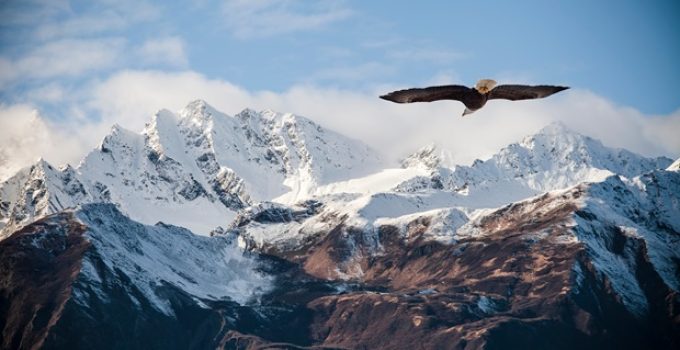Eagles are fierce hunters and powerful fliers, but where exactly do they make their homes? The answer depends on the species—but in general, eagles live on every continent except Antarctica and are found in a surprising range of habitats, from tropical rainforests to high mountain cliffs.
Dive Deeper
- Global Distribution
- Habitat Types
- Where Different Eagles Live
- Threats to Eagle Habitats
- Eagle Habitat Table
- 🎯 Final Thoughts
- 📚 References
Global Distribution
Eagles are widespread and incredibly adaptable.
- Found on every continent except Antarctica
- Greatest diversity in Africa and Eurasia
- Only 2 species commonly found in North America: the Bald Eagle and the Golden Eagle
📊 Statistic: There are more than 60 eagle species worldwide, most concentrated in warm regions across Africa and Asia1.
Habitat Types
Eagles thrive in different environments depending on their hunting strategies and nesting preferences:
- Forests – for tree-nesting and hunting small mammals or birds
- Mountains and cliffs – for nesting and soaring while hunting
- Wetlands and rivers – ideal for fish-eating eagles
- Grasslands and savannas – preferred by eagles that hunt terrestrial prey
- Coastal areas – especially for sea eagles that rely on marine life
They typically nest in high places such as tall trees or rocky cliffs, building large nests called eyries.
📏 Statistic: Bald Eagles build some of the largest nests of any bird, reaching up to 13 feet deep and weighing more than 2,000 pounds2.
Where Different Eagles Live
Here are a few eagle species and their preferred environments:
| Eagle Species | Region | Preferred Habitat |
|---|---|---|
| Bald Eagle | North America | Forests near rivers and lakes |
| Golden Eagle | Northern Hemisphere | Mountains, cliffs, open terrain |
| Harpy Eagle | Central & South America | Dense tropical rainforests |
| White-tailed Eagle | Europe & Asia | Coastal wetlands, rivers, and large lakes |
| African Fish Eagle | Sub-Saharan Africa | Near freshwater lakes and rivers |
| Steppe Eagle | Central Asia to Africa | Grasslands, steppes, and arid open areas |
| Wedge-tailed Eagle | Australia | Open woodlands, savannas, and outback |
Threats to Eagle Habitats
While eagles are apex predators, they are vulnerable to environmental changes:
- Deforestation and urban development destroy nesting areas
- Water pollution affects fish populations, harming species like the Bald and African Fish Eagles
- Lead poisoning from hunting ammunition is a growing concern
- Climate change alters both nesting habitats and food availability
⚠️ Statistic: According to a 2022 study by the U.S. Geological Survey, nearly 50% of Bald and Golden Eagles tested showed signs of chronic lead poisoning, largely from eating shot animals3.
Eagle Habitat Table
This quick-reference table summarizes where some of the most well-known eagles live:
| Continent | Notable Species | Common Habitats |
|---|---|---|
| North America | Bald Eagle, Golden Eagle | Rivers, lakes, cliffs, forests |
| South America | Harpy Eagle | Rainforests |
| Europe | White-tailed Eagle | Coasts, estuaries, inland lakes |
| Africa | African Fish Eagle | Wetlands, river basins |
| Asia | Steppe Eagle | Steppes, arid plains, open woodlands |
| Australia | Wedge-tailed Eagle | Dry forests, savannas, mountainous areas |
🎯 Final Thoughts
Eagles are among the most adaptable raptors on the planet, occupying a stunning variety of habitats. From the lush Amazon canopy to the craggy highlands of Mongolia, these birds embody power and grace in every ecosystem they touch. Understanding where eagles live is vital not just for appreciating their natural diversity, but also for protecting the environments they depend on.
📚 References
- BirdLife International. (2023). Eagle species distribution. Retrieved from https://www.birdlife.org ↩
- National Wildlife Federation. (2024). Bald Eagle Nesting Facts. Retrieved from https://www.nwf.org/Educational-Resources/Wildlife-Guide/Birds/Bald-Eagle ↩
- U.S. Geological Survey. (2022). Lead Poisoning Widespread in Eagles. Retrieved from https://www.usgs.gov/news/national-news/lead-poisoning-eagles ↩
- Ferguson-Lees, J., & Christie, D.A. (2001). Raptors of the World. Houghton Mifflin Harcourt.
- Cornell Lab of Ornithology. (2024). Eagle Habitat and Behavior. Retrieved from https://www.allaboutbirds.org
